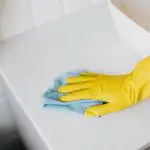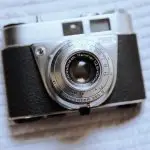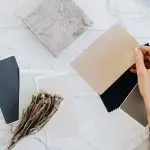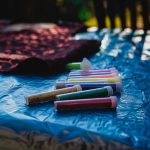If you've ever wondered what the best glue is for bonding metal to fabrics, you're not alone. Finding the right adhesive for metal fabrics can be crucial for your projects. With so many options available, it's important to know which one will provide the strength and durability you need.
In this guide, we'll explore the characteristics of effective metal glues, factors to consider when choosing metal adhesives, and the top adhesive options for metal fabric projects. By the end, you'll have a clear understanding of the best glue for metal fabrics and be equipped to tackle your next metal fabric bonding endeavor with confidence.
Key Takeaways
- Epoxy adhesive is a versatile and durable option suitable for bonding metal to fabric.
- Polyurethane adhesive provides flexibility and resilience, making it ideal for applications with movement or stress.
- Cyanoacrylate adhesive (superglue) offers quick bonding for small metal pieces to fabric but may not withstand heavy stress.
- Contact cement is a good choice for bonding metal to fabric on large surface areas, providing a strong and long-lasting bond.
Types of Metal-Fabric Adhesives
When working with metal fabrics, you should use an adhesive that's specifically designed for bonding metal to fabric. Adhesive selection is crucial in ensuring a strong and durable bond between the two materials.
There are several types of adhesives suitable for metal fabrics, including epoxy, cyanoacrylate, and polyurethane adhesives. Epoxy adhesives are known for their exceptional strength and are well-suited for bonding metal to fabric. Cyanoacrylate adhesives, commonly known as superglue, are quick-setting and provide a strong bond, making them suitable for smaller, intricate metal fabric applications. Polyurethane adhesives are flexible and resistant to heat and moisture, making them ideal for outdoor or high-temperature applications.
In addition to adhesive selection, mastering the application techniques is equally important. Prior to applying the adhesive, it's crucial to ensure that the metal and fabric surfaces are clean and free from any contaminants that may hinder adhesion. Applying the adhesive evenly and allowing sufficient curing time are essential for a successful bond. Moreover, following the manufacturer's guidelines for application and curing will further enhance the strength and durability of the bond.
Understanding the characteristics of each adhesive type and employing proper application techniques will result in strong, reliable bonds between metal and fabric.
Characteristics of Effective Metal Glues
When choosing a metal glue, you want to consider its bond strength and durability, as these are crucial for long-lasting results.
Additionally, it's important to ensure that the adhesive is compatible with the specific type of metal you're working with, to guarantee a strong and reliable bond.
Bond Strength and Durability
Achieving a strong and durable bond is essential when choosing the best glue for metal fabrics. The bond strength refers to the maximum load the adhesive can withstand before breaking, and this is crucial for ensuring the longevity of the bond.
Look for metal glues that offer high bond strength, such as epoxy or cyanoacrylate adhesives, as they're known for their exceptional bonding capabilities.
Additionally, consider the temperature resistance of the adhesive. Metal fabrics may be exposed to varying temperatures, so the glue must maintain its bond integrity across a wide temperature range.
Opt for adhesives specifically designed for metal that offer excellent temperature resistance to ensure the durability of the bond in different environmental conditions.
Compatibility With Metal
To select an effective metal glue, consider its compatibility with metal and its ability to form a strong bond with metal fabrics.
Metal surface preparation is crucial for ensuring the adhesive can adhere properly. Prior to application, the metal surface should be clean and free from any contaminants such as oil, grease, or rust.
Additionally, the adhesive application method should be suitable for the specific type of metal to ensure maximum adhesion.
When evaluating metal glues, it's essential to consider their long-term performance, taking into account environmental factors such as temperature variations and exposure to moisture.
A high-quality metal glue should exhibit resilience in diverse environmental conditions to maintain a strong and durable bond with the metal fabric over time.
Factors to Consider When Choosing Metal Adhesives
Choosing the right metal adhesive for your project requires careful consideration of several key factors. To ensure the success of your metal fabric project, it's crucial to take into account the following:
- Metal Type: Different metals have varying surface properties and require specific adhesives to achieve a strong bond. Consider the type of metal you're working with and choose an adhesive that's compatible with it.
- Application Technique: The method of application can significantly impact the adhesive's performance. Whether you're using a brush, spray, or applicator, understanding the recommended application technique for the adhesive is essential for a successful bond.
- Environmental Conditions: Assess the environmental conditions the metal fabric will be exposed to, such as temperature, humidity, and chemical exposure. Select an adhesive that can withstand these conditions to ensure long-lasting durability.
- Curing Time: Consider the project timeline and the adhesive's curing time. Some adhesives require extended curing periods, while others offer rapid bonding solutions. Choose an adhesive that aligns with your project's timeline and requirements.
Best Glue for Bonding Metal to Fabric
When bonding metal to fabric, you want to consider adhesive options that are suitable for both materials.
Fabric-friendly bonding solutions are essential for maintaining the integrity of the fabric while creating a strong bond with the metal.
Additionally, durability and flexibility are key factors to keep in mind when choosing the best glue for this type of application.
Adhesive Options for Metal
For bonding metal to fabric, you need a strong adhesive that can withstand the stresses of both materials. When choosing an adhesive for metal to fabric bonding, consider the following options:
- Epoxy Adhesive: A versatile and durable option suitable for various types of metal and fabric.
- Polyurethane Adhesive: Provides flexibility and resilience, making it ideal for bonding metal to fabric in applications with movement or stress.
- Cyanoacrylate Adhesive (Super Glue): Offers quick bonding for small metal pieces to fabric, but may not withstand heavy stress.
- Contact Cement: A good choice for large surface areas, providing a strong, long-lasting bond between metal and fabric.
Consider the specific application, stress, and flexibility requirements when choosing the best adhesive for your metal to fabric bonding needs.
Fabric-Friendly Bonding Solutions
Consider using a polyurethane adhesive for bonding metal to fabric, as it provides resilience and flexibility to withstand movement and stress. When bonding metal to fabric, it's crucial to use fabric-friendly bonding solutions that can accommodate the different material properties. Here are some fabric bonding techniques and surface preparation techniques to ensure a strong and durable bond:
| Fabric Bonding Techniques | Description | Benefits |
|---|---|---|
| Sewing | Traditional method, provides strong and durable bonds | Allows for easy repairs and alterations |
| Heat Bonding | Uses heat to melt adhesive and bond fabric and metal | Provides a seamless bond without stitching |
| Adhesive Bonding | Utilizes fabric-friendly adhesives | Preserves the appearance and integrity of the fabric |
Durability and Flexibility
To achieve a reliable and long-lasting bond between metal and fabric, you frequently need a glue that offers both durability and flexibility. When considering durability and flexibility standards for bonding metal to fabric, it's crucial to select a glue that has undergone rigorous durability testing and meets industry standards for flexibility.
Here are key factors to consider:
- Durability Testing: Look for glues that have been tested for their ability to withstand various environmental conditions, such as heat, cold, and moisture.
- Flexibility Standards: Ensure that the glue maintains its adhesive properties even when the fabric undergoes stretching or bending.
- Impact Resistance: Choose a glue that can withstand impacts without losing its bond strength.
- Longevity: Seek glues with a proven track record of long-term adhesion to both metal and fabric surfaces.
Selecting a glue that meets these criteria will ensure a durable and flexible bond between metal and fabric.
Top Adhesive Options for Metal Fabric Projects
You'll find that epoxy adhesives are a reliable choice for bonding metal fabrics in your projects. When working with metal fabrics, it's crucial to employ effective bonding techniques and proper surface preparation to ensure a strong and durable bond.
Epoxy adhesives are well-suited for metal fabric projects due to their exceptional strength and resistance to heat, chemicals, and moisture. They provide a secure bond that can withstand the rigors of various applications, making them an ideal choice for metal fabrications that require durability and flexibility.
Additionally, cyanoacrylate adhesives, commonly known as super glues, offer a quick and strong bond for metal fabrics. These adhesives are suitable for smaller, intricate metal fabric projects where a fast-setting adhesive is needed. When using cyanoacrylate adhesives, ensure that the surfaces are clean and free of any contaminants to promote optimal adhesion.
Tips for Applying Glue to Metal Fabrics
For applying glue to metal fabrics, start by cleaning the surfaces thoroughly to ensure optimal adhesion. Proper surface preparation is crucial for a successful bond between the metal surface and the adhesive. Here are some tips for applying glue to metal fabrics:
- Surface Preparation: Clean the metal surface with a solvent to remove any dirt, oil, or residue that could interfere with the adhesive bond.
- Adhesive Application: Apply the adhesive evenly to the metal surface using a brush or applicator to ensure full coverage and a strong bond.
- Clamping or Pressing: After applying the adhesive, use clamps or a press to firmly bond the metal fabric and the metal surface together. This ensures a secure and uniform bond.
- Drying Time: Allow sufficient drying time as per the adhesive manufacturer's instructions before subjecting the bonded materials to any stress or load.
Following these applying techniques and adhesive application tips will help you achieve a strong and durable bond between metal fabrics and metal surfaces.
Understanding the Strength of Metal Adhesives
To understand the strength of metal adhesives, assess their ability to withstand various stresses and loads when bonding metal fabrics to surfaces. Understanding adhesion properties is crucial in determining the effectiveness of metal adhesives. Factors such as tensile strength, shear strength, and peel strength are essential in evaluating the adhesive's ability to withstand different types of forces.
Tensile strength measures the maximum tension the adhesive can withstand when pulled in opposite directions. Shear strength is the ability of the adhesive to resist forces that cause the internal structure to slide against itself. Peel strength refers to the force required to peel the adhesive away from the surface.
When comparing bonding methods, consider the load type and magnitude the adhesive will be subjected to. Different bonding methods may excel in specific stress conditions. By evaluating these adhesion properties and comparing bonding methods, you can determine the most suitable metal adhesive for your specific application.
Precautions for Using Glue on Metal Fabrics
When using glue on metal fabrics, consider the potential impact of environmental factors and the necessity of thorough surface preparation to ensure optimal adhesive performance. Safety precautions and proper application techniques are essential to achieve the best results when working with metal fabrics. Here are some important precautions to keep in mind:
- Ventilation: Always work in a well-ventilated area when using adhesives to avoid inhaling potentially harmful fumes.
- Protective Gear: Wear gloves and eye protection to prevent skin contact and eye irritation from the glue.
- Surface Cleaning: Ensure that the metal fabric is clean and free of any oils, dirt, or debris before applying the glue for a strong bond.
- Adhesive Compatibility: Select a glue that's specifically designed for bonding metal fabrics and follow the manufacturer's instructions for application and curing times.
Frequently Asked Questions
How Can I Remove Excess Metal Adhesive From Fabric?
To remove excess metal adhesive from fabric, gently scrape off the residue with a plastic scraper or the edge of a credit card. Then, apply a small amount of rubbing alcohol or acetone to a cloth and dab at the remaining adhesive until it lifts.
Can Metal Adhesive Be Used on All Types of Metal Fabric, Such as Stainless Steel or Aluminum?
When using metal adhesive on different types of metal fabric, consider the adhesive strength required and the specific application techniques for stainless steel or aluminum. Understanding these factors will ensure a successful bond.
Are There Any Special Storage Requirements for Metal Adhesives to Ensure They Remain Effective?
To ensure adhesives remain effective, store them in a cool, dry place. Moisture control and temperature regulation are crucial for preserving their quality. Follow these storage requirements to maintain the effectiveness of your metal adhesives.
Can Metal Adhesive Withstand Extreme Temperatures or Environmental Conditions?
Metal adhesives can withstand extreme temperatures and environmental conditions. To ensure maximum resistance, follow proper application techniques and store them as per the manufacturer's instructions. This will help maintain their effectiveness over time.
Are There Any Safety Considerations When Using Metal Adhesive on Fabric, Such as Ventilation or Protective Gear?
When using metal adhesive on fabric, it's crucial to consider ventilation precautions and wear protective equipment. Proper application techniques are vital for safety, and potential hazards should be acknowledged to ensure a successful and secure bond.
- Beginner's Guide to DIY Fabric Projects - July 18, 2024
- Fun Fabric Crafts for Kids - July 18, 2024
- Upcycling Clothes: Turning Old Into New - July 18, 2024








